One of the primary tools for the Survivalist is the Folding Knife. This is used for food preparation, as pry bar, screw driver, box opener and self-defense weapon. In most cases, the Urban Survivalist will use it to open mail, packages, and to cut twine. The country counterpart will use it to whittle, cut rope, prepare food, or even dress game. In a full on survival situation, a person could find themselves prying a screen off a window, or forcing a lock, cutting clothing from an injured person, or finishing off injured game. Possibly digging a hidden item out of the ground, using as a tool to make other tools or weapons, or using it as a last ditch defensive weapon. Definition of the “full on survival situation” would be any situation where the tool needed is critical; meaning that its failure would be devastating or catastrophic. To prevent this and to educate folks new to survival preparations as well as self-defense I would like to go over selection, materials, types, and carry of the survival folding knife.
Image courtesy of [image creator name] / FreeDigitalPhotos.net
First, the knife must be of a legal to carry length. For instance in Colorado, the statewide legal length from guard to tip is 3.5 inches with a single edge. Ballisong, switchblades, gravity knives, double edged and ballistic knives are illegal weapons in Colorado. You do not want to get caught carrying an illegal knife period. You could end up in court with an illegal weapon charge, and if you have to actually use the knife in self-defense the first thing to be used against you would be that it is a illegal size or type. Also, if you have a job or are walking through a metal detector and accidentally forget it is there you won”t be arrested, fired, or at the least lose your survival tool to the authorities. Some states have laws regarding when, how, and where you carry and also rules regarding concealment. Keep this in mind as it is very important, especially in extreme circumstances as mentioned above or in cases of martial law, evacuation, or even during routine police stops.
Secondly, we need to consider type after we have established the legal guide lines. The most versatile types must be considered. It needs to be quick to access, easy to find in darkness, easy to identify by feel, and safe to carry. It also must not fall off, drop out of the pocket, or be too obvious or cumbersome. You want it to blend in, but not so much that you cannot get to it in an urgent moment of need. Most modern folding knives have some sort of clip that is mounted to the handle of the knife. They should be steel, and riveted or screwed to the knife. Glue will not do! Folding knives stored in a sheath are much slower to get to although you may want to carry a second one as back-up this way. The knife should be designed with your “handed-ness” in mind. Meaning if you are right hand dominant, it needs to be worn on the right and so on. Also most modern folding knives have legal thumb studs or other apparatus to thumb or finger the blade open. Go to a dealer and try as many as you can, do not just order the latest and greatest without trying it first. Narrow it down to 2-3 types you are comfortable and consistent with.
When you have established what types are easiest for you to access and open, then you need to consider the materials it is made from. If you are purchasing the knife from an established manufacturer, you should be able to go on-line or in a catalog and find the brand, model, and specifications. You will see specs for length, weight, blade material, handle material, lock type, and possibly Rockwell hardness and grind. If you are indeed buying from a well known manufacturer, basically you want to narrow the blade material down, as well as warranty. All the other details, while important, are lower priorities. Most blades are more or less rust resistant depending on grade, and are harder or softer so will be harder or easier to sharpen and hold an edge. The harder steel is not necessarily the better grade however! If you are really hung up on this, educate yourself on knife steel grades at the library with books written in 2005 and up. Ideally you will want to know if it is rust resistant, rust proof, or if you will need to oil it regularly. This is important for those who will use it hunting, preparing food, boating, in wet climates, and such on a regular day-to-day basis. This may also affect the handle material choices.
Once you have analyzed your needs based on use, climate and personal preferences you want to consider your budget. This is where people really blow it. I managed two knife stores for a total of 11 years, and also collect and work gun shows time to time. I have seen so many people get fixated on price, then go for a “cheap” knife. A really good dependable knife will cost you between $80 and $350 dollars with most being about $150 USD (2008). If you plan, and only purchase one good folder this cost will be mitigated. For the Survivalist this budget is important as you have many other needs and equipment to purchase. The wise minded survivalist will get the best he can afford. You will want to consider the warranty again, and the history of reliability from this manufacturer. Go on-line to various knife forums and see what people say. Also, talk to local vendors and emergency personnel including police, military and fire rescue. They usually get the good gear and have experience using it.
Lastly, when looking at knives for your personal survival tool, consider how it will be used. It must be thick, strong, sturdy, have a safe locking mechanism, sharp, easy to sharpen, easy to safely grip, and designed with function in mind. Do not get side-tracked about how it looks or how cool it is. Also, it must be able to perform many tasks. Do not forget that this may be the last ditch defensive weapon or the ONLY weapon you have to defend yourself from attack. It may be multiple two-legged assailants or a dog, or possibly it will be used to fight your way to your firearm or other defensive tool. It may be used to skin and dress game, dispatch wounded animals, make a temporary wilderness shelter, used to make other tools and weapons, and so on. This is really the crux of a survival knife, let alone a folding pocket knife. Ideally you will have a bigger fixed bladed knife, but on a day-to-day basis will you really carry a 6 inch fixed blade to work in your briefcase or purse? Most of us will say no. Also, in step with preparedness in general it is important to have equipment on you while you do your daily travels, work, and leisure activities. We really cannot predict when something bad will happen so we must always be ready.
After you have purchased your knife, make sure the screws on the clip are tight but don”t over tighten. Also you will want to practice drawing and opening your knife. Do not rely on “flicking” or using gravity or centrifugal force to open your blade. You want to use the factory apparatus or thumb stud to open the blade. It is easy to drop or toss your knife while flicking it open, and this also creates wasted movement. It may also telegraph your intent, your weapon, and make more sound. You want to practice the art of subtlety, more like a samurai or medieval duelist than a barbarian or movie hero. After you have mastered the draw, work on speed and economy of motion. Less is better! Once your draw is fluid, then practice opening in the dark. You will find that with enough practice you can keep your eyes on the task or threat without having to look down at your knife. Finally, when you can draw in the dark by feel go to practicing in a lighted room but practice drawing while tying your shoe, bending, getting a wallet with the other hand, while stepping forward, back or sideways, and while issuing verbal commands like “Stop!” You may also want to transition to a defensive stance and be aware that you usually want the knife in a forward dominant hand.
This brings us to grip. How you hold and use the knife is just as important as the knife. You want to cut away from yourself when opening packages, or mail. Same when you are dressing game, whittling a arrow, or prying something. You always want the point and sharp edge to point away from you so that if you slip it will not cut or stab you.
Also, just as important you want the actual grip to be strong and secure so that the knife does not slip away or slip out of your hand completely. When a person is in an emergency, their focus can be easily distracted. Also, adrenaline, sweat, blood, water, oil or physical obstructions could impair or destabilize the grip. Make sure you practice using your knife safely and if you practice using it defensively make sure your grip is secure. One fun thing to do is to gently stab a card board box, then shave the box, then cut the box into pieces. You will see how different jobs and forces will affect grip. Be careful as you can easily get cut during this process.
Grip is also very important during a defensive counter attack. As mentioned above, you want the knife in your dominant hand, lead leg forward. This gives you maximum reach or range to stab or slash at a attacker. Keep the knife in a point forward grip like you would a razor knife to cut drywall for instance. Not like a hammer, or reverse like a ice pick. People with professional knife fighting training will sometimes use a reverse grip, but that requires training and is beyond the scope of this article. Basically you want as much room as you can get between you and the attacker, and you want to be able to cut without exposing your vital areas to the attacker. The most basic way to do this is as mentioned dominant hand forward, lead leg forward. You can also lunge forward this way or spring backward and still be able to counter attack.
Some tips in general for the folding knife and the survivalist:
- Carry the longest blade you can legally carry in your state. Be reasonable on this! There are unusual 6 inch folders, but why not get a fixed blade at that point?
- The knife should blend or be concealable, and should be easily accessed.
- Get brand name knives including custom folders from well known makers.
- Key chain or other gimmick knives do not fit the bill of the robust folding survival knife. These might work as a secondary or tertiary knife however.
- Consider your secondary knife to work weak handed as a back-up.
- Also consider a multi-tool as back up. They usually have locking blades with a variety of designs.
- Make sure the handle is not too slippery or too shiny. You want a secure grip and something that blends in with your wardrobe.
- Learn to disassemble, clean, sharpen, and oil your knife. Look at a small sharpener for your key chain, pocket or survival kit.
- Although double edged folders are out there remember to be reasonable and to keep it legal. Also, single edged knives are more utilitarian in nature.
- Make sure the knife stays on your belt or in your pocket.
- Carry it every day everywhere you go, including in your robe, underwear or sleep garments, exercise clothes, or business suit. Take it off when you are actually sleeping or bathing.
- Be careful carrying other gear in the same area. Sometimes the knife may open in your pocket and you could get a nasty cut. Make sure the knife blade is not too loose, and this is also another good reason to buy a quality knife design.
- Use your knife! Don”t be afraid to dull it or scratch it. It is a tool for one, and also it is a survival item that must be tested and proven.
- Practice the draw regularly as mentioned above.
- Consider this a “Every Day Carry” item. Do not get into the habit of taking it off, or throwing it on the table or in the car. Would a samurai throw his sword away to go to the bathroom, read, or train? No way and neither should you.



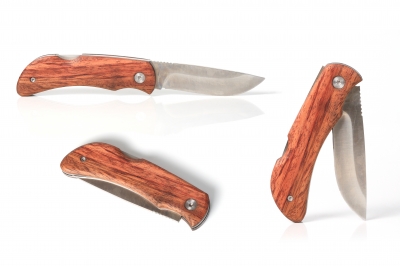



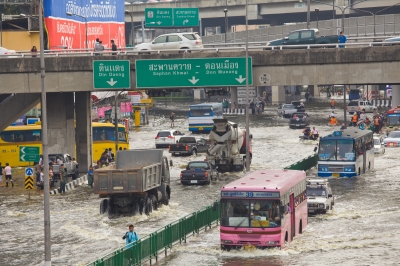


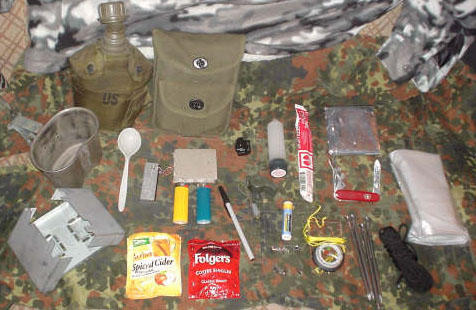

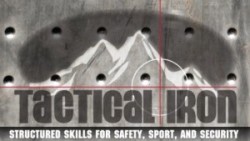

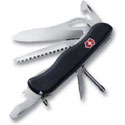



Recent Comments